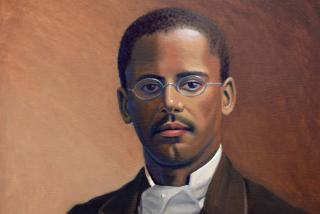Advertisement
Rarely today does a single person get credit for a major technological advance the way Thomas Edison and Alexander Graham Bell did in the nineteenth century. Yet even back then, inventions were almost always the product of many ingenious minds collaborating and competing with one another.
Brilliant, modest, and still little known, Lewis Latimer was a key figure behind two of the most revolutionary inventions of all time—the light bulb and the telephone. The son of escaped slaves, Latimer became one of the first African American inventors and helped found the Unitarian church in Flushing, New York.
Latimer grew up in Boston. His family moved from house to house to elude slave catchers, and he attended only grammar school before going to work in his father’s barbershop. The capture of his father, George, in 1842 spurred Boston’s abolitionists to their first political action—creating a human wall around the Leverett Street Jail to prevent his return to a Virginia slaveholder. They also bought his freedom.
At 16, Lewis Latimer enlisted in the Navy to fight for the Union in the Civil War, lying about his age. On his return, he landed a job as an office boy with a patent-law firm. Latimer eagerly studied the draftsmen who turned clients’ sketches into drawings for their patent claims. He bought his own tools and practiced at night. In eleven years at the firm, he rose to head draftsman—but was paid less than white draftsmen.
In 1876 Alexander Graham Bell, a teacher of deaf students, asked Latimer to help him apply for a patent. Bell knew others were also working on devices to transmit human voices over electrical wires, and he was in a race to secure a patent. Bell and Latimer, just a year apart in age, worked furiously on Bell’s application after-hours from their jobs. Just four hours after the patent was approved, another inventor submitted his own plans.
Latimer’s most significant contribution was making the light bulb practical and affordable. In 1879 Edison, the country’s most prolific inventor, received the U.S. patent for the light bulb. However, the paper filament in his bulb lasted only a few days. After hundreds of experiments, Latimer the same year developed long-lasting and inexpensive carbon filaments. He also improved almost every component and step in light bulb production: a threaded socket; the oven, chemicals, and glassblowing equipment; a new switch. He oversaw installation of public lighting systems in New York, Philadelphia, Montreal, and London. In 1918 he was the only African American selected as one of the 28 charter members of Edison’s Pioneers, a prestigious industry group.
Yet most accounts of the light bulb do not even mention Latimer. His granddaughter, Winifred Latimer Norman, a member of Fourth Universalist Society in New York City, cites two reasons: the color of his skin and the lot of the salaried researcher. Latimer worked for two electric companies, including Edison’s, who claimed the profit and patents on most of his inventions.
Latimer’s creativity extended far beyond electricity. Among inventions he patented himself were a forerunner of the air conditioner and a locking coat rack. He played the flute and violin. He wrote a book of poetry and a play that was produced. Even his book about incandescent lighting shows his poetic side: “Like the light of the sun, it beautifies all things on which it shines, and is no less welcome in the palace than in the humblest home.”
Corresponding with black intellectuals, Latimer insisted on full citizenship and integration of African Americans into society. He bought a large house in the mostly white borough of Queens, which is now a museum in his honor. And in 1908 he helped found what is now the Unitarian Universalist Congregation of Queens, where his portrait hangs in the sanctuary.
Next fall the congregation will begin a yearlong centennial celebration. “The fact that we had an African American founder says a lot about our church,” said Essie Wicks-Williams, church president. “The man revolutionized the world, not just this country, and we need to claim him.”
This article appeared in the Fall 2006 issue of UU World (page 64).
Related resources
- The Life and Inventions of Lewis Latimer. Includes links to many of Latimer’s patents. (About.com)
- Blueprint for Change: The Life and Times of Lewis Henry Latimer. Catalogue and scholarly essays from a 1995 Queens Public Library exhibition on Latimer. (Thomas A. Edison Papers at Rutgers)
- A Short History of the Unitarian Universalist Congregation of Queens. (UUCQueens.org)
